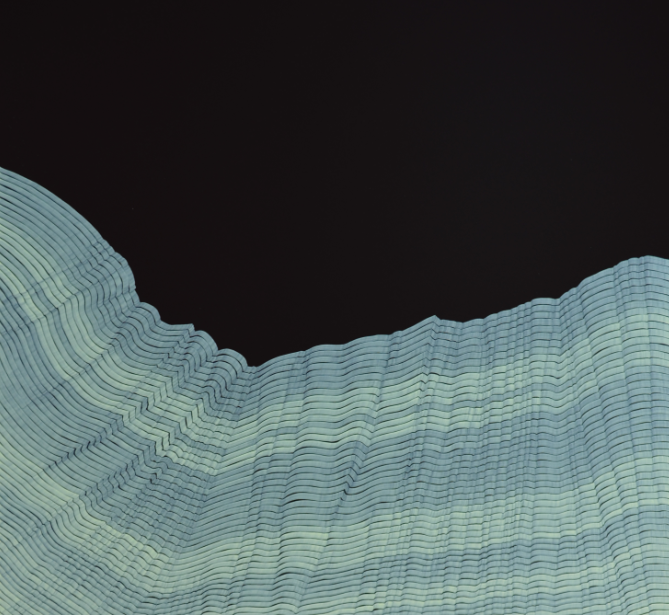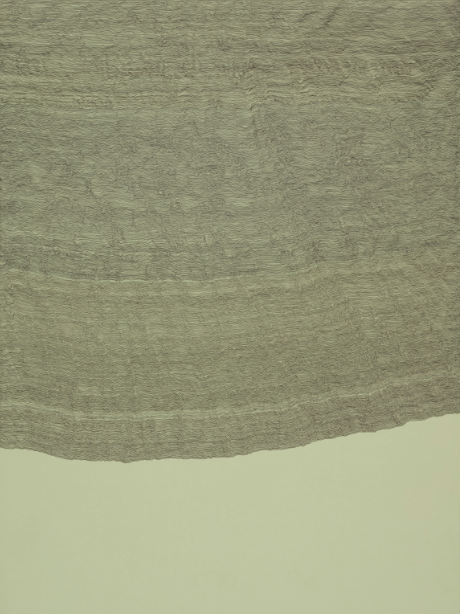12 Questions with Anton Lefabi - Magazine Issue02
Anton Lefabi is a featured artist in Al-Tiba9 magazine ISSUE02, interviewed by Mohamed Benhadj about his project MATIERES.
Anton Lefabi’s work is centered on repetition, obsession, irony, and sacrifice. It is essentially based on a conceptual modus operandi which manifests itself in various thematic work series. Lefabi tries to shift people's perception by investing most of his energy into developing a method of transcription which aims to let a work radiate a specific idea. The suitable form of expression is defined by the idea's inherent mindset.
Please describe the intention behind your art. How do you successfully express this intention?
The ultimate and universal artistic intention to me is to improve the world. On the one hand, there is a personal intention: the profound inner desire to express something about ideas or issues without using written or spoken language. I believe in the potential of art as the most sustainable, uniting and interesting medium of reflection to translate, process and transmit the content and nature of ideas and concepts. Within different work series, I follow different strategies of intention. These intentions can be philosophical, political but also ironic. I would like people who get in contact with my work to pause. Contemplating and empathizing with an idea and its influence on the world can lead to a process of redefinition of your idea of this idea. I try to shift people's perception by investing most of my energy and time into developing a method of transcription which aims to let a work radiate a specific idea.
Can you talk a little about your formative years as an artist?
Probably I am still in the middle of something called "formative years" but in general I consider large parts of my experience in life as my formation as an artist. Since the age of fourteen, I’ve always been working on artistic projects. Having a background in architecture, philosophy, music and art history always stimulated me and shaped my way of thinking. It’s as if I approached art from orbiting it.
The work « Matières » deals with the recording of time – by tracing as well as memorizing time using lines. It is an artistic-philosophic attempt to individually sense, observe and memorize time in a very self-aware way. What inspired this artistic expression?
Matières are the expression of nothing else but time. By concentrating on something which is visually not palpable - not explicit - I kind of „rebooted“ my artistic output. Therefore I understand Matières as my artistic zero-point. Before getting to this non-intentional and non-inspired point, I spent a long time waiting. I waited for nothing in particular. By simply letting enough time pass by you can experience somewhat like a passive state of being - where you perceive change without changing yourself. This is when I realized that you have to do nothing at all to comprehend the essence of time.
Where did you get your imagery from? (What, if any, sources did you use ?)
The composition of these drawings and paintings is extremely simple. There was no need for external references or sources except for the visualization of the actual idea of time. Matières are inherent images of the progression of time. Anybody could create them anytime, anywhere.
In this series, you play a lot with the composition of forms and lines. What I find personally compelling though, is that you take the viewer on a journey through life and as with circle rings in woodcuts, the line stands emblematically as the expression of the inevitable linearity of time. It’s life as a process that defines growth and change of a body on a scale of time and quantity. Can you talk about that?
The idea of time is change. Through time we perceive duration. Duration, in turn, generates room to maneuver within where change can happen. Without time life could never exist. It is this temporal dependency which in this context makes me think about the two philosophical terms of "inherence" and "accident". For instance, the gradual emergence of vertical structures in “Matières” combines inherent and accidental properties and reveals the complexity of simultaneity. Of course, the moment in which I draw a single line is dedicated to this very line. But it is also and at the same time dedicated to something different which will only show its existence later on.
« Matières » is defined by the highest calm and concentration. An uninterrupted line is drawn as straight as possible from one end of the picture to the other. How can you describe this creation process for our readers?
The composition of these fragmented timelines derives from a ruminant work process. I try to draw an uninterrupted line as straight as possible from one end of the picture to the other. The next line is drawn as close as possible to the first line without intersecting. So on and so forth. Even if the first line appears to be drawn with extreme precision, it will never be straight. I have to accept irregularities and the absence of perfection. Every single deviation generates consequences. These imperfections radiate and are amplified throughout the following lines. Time takes its course – also in visual terms. Spatial and temporal interdependence manifests itself with the succession of lines.
Since there is a high degree of concentration needed to record the lines, the set of rules intensifies the performative act. The act of drawing a line becomes the exclusive conscious experience. Time loses itself in the line. This loss of time is symbolically transcribed to the medium at hand. Everything else is neglected, which leads to a state of the here and now, where the moment dominates.
You work a lot in the series. Do you think this will always be the case?
Maybe. What I find convincing about working in a series is that the basis of my creative process can rather be related to a topic or subject matter than to a subjective way of expression or my formal style. I don't want to prioritize style over an issue. I am not even interested in developing a recognizable artistic style. If there was something which I would like to be identified with, it is how I deal with ideas in general, or with a specific strategic approach. I don't want to impose something like an artistic CI (corporate identity) on any kind of subject matter I deal with.
What was the main influence on your work or how it was made?
- For me, it rather seems to be a "manière de fonctionner", a modus operandi that forms my work: a strong inherent impulse to reflection combined with reverie and sometimes idiosyncratic perceptions of certain ideas and concepts.
- Caring! I consider myself very careful - maybe even vigilant - personality. It's important to care about someone but also about something! I feel more and more the urge and inclination for empathy with situations or issues. Hard to describe, maybe it's a kind of anthropomorphized view on the world.
- Being sensitive. I am a thin-skinned person who reacts very sensitive to external impact. I explore my ability to digest information, I allow myself to swallow input from the outside world and to translate it to my inner feelings. It’s a process of breaking down information, splitting it up into smaller chunks and rearranging it into some novel composition.
- Functioning slowly. I take my time for the things I do. I do not always have to do something. I need breaks, time offs, inefficiency, periods of silence and loneliness...
- Infinite doubting! Or to quote Voltaire: "Le doute est désagréable, la certitude est ridicule."
- Obsession.
- 9/11
They say if you could be anything but an artist, don’t be an artist. What career are you neglecting right now by being an artist?
I say if you could be anything but an architect, don't be an architect.
What current project are you working on?
For more than a year I am working on a series of 56 portraits that deal with the thematic interconnection of power and hope. In a mixed drawing-painting process I portray contemporary personalities from politics and industry in highest positions of power. In some respects, one could perceive this work as the antithesis or inverted sequel of Gerhard Richter’s "48 Portraits" from 1976.
What is your favorite genre of music to listen to while working?
It depends on the type of project I am working on. When working on the Matières series, I either do not listen to music at all or to instrumental music (of almost any genre). In general, I try to avoid multitasking. The textual-linguistic aspects of music may disturb me while working highly concentrated. During the creative process, I prefer being alone with my work in a closed room and I often don't even feel the need for the vocal presence of a singer. Although: Radiohead almost always works.
Do you have any upcoming shows or collaborations?
In collaboration with the City of Vienna and the artist Gerald Straub, I am working on the realization of a performative and interactive community project at a market area in the outskirts of Vienna. Through various artistic interventions, we will try for several weeks to revitalize the area. One specific aim is to reconnect the market stall operators by integrating them in diverse creative processes and to build up a new sense of solidarity and togetherness. In this case, art acts as a social catalyst.













